Consisting of a gravel fork, new drivetrain parts, a next-gen Reverb AXS dropper seat post and a swish new set of Zipp wheels, the SRAM XPLR collection is one massive gravel hallelujah courtesy of SRAM, RockShox and Zipp. Having already put it through its paces, here’s what you need to know and our first impressions.

For the SRAM XPLR (read: ‘Explore’), SRAM, RockShox and Zipp have gone all-in when it comes to gravel. Launching no fewer than three new sets of products, they’re hoping to shake up the market by dishing out more ways for riders to live out their own definition of gravel. Inside this article we’ve collected the most important information and give you the low-down on how the components fared in their first test.
- RockShox Rudy Ultimate XPLR fork in detail
- Quick Facts
- First test: Rudy Ultimate XPLR fork
- Our thoughts on the RockShox Rudy
- Saddle travel: the new RockShox Reverb AXS XPLR seatpost
- Quick Facts
- First test: Reverb AXS XPLR dropper post
- Our thoughts on the RockShox Reverb AXS XPLR
- New gravel gearing: XPLR eTap AXS rear derailleurs and cassettes
- XPLR eTap AXS derailleur: RED, Force und Rival
- Specification
- SRAM XPLR 10–44 T cassette
- Specification
- New direct mount 1x cranksets
- Specifications
- Our thoughts on the new SRAM XPLR eTap AXS ratio
- Zipp 101 XPLR wheelset
- Availability of SRAM XPLR components
- Our thoughts on SRAM XPLR collection

RockShox Rudy Ultimate XPLR fork in detail
According to RockShox, the brand-new Rudy Ultimate XPLR fork has been developed from the ground up for (e-)gravel, offering tyre clearance up to 700 x 50C. With a choice of 30–40 mm travel, it’s designed to have sufficient in reserve to maintain control when the farm tracks get bumpy or the singletrack gets rowdy. The objective of the € 869 fork: more control, more speed, more fun.

The XPLR fork is built with the familiar Charger Race Day damper, which we know from RockShox’s performance-led XC fork line-up, like the SID Ultimate, but has now been tuned for gravel – we’re talking a completely rigid lock-out and generous rebound adjustability. The Solo Air spring is claimed to be well-suited for short travel and capable of both serious sensitivity over small bumps and sufficient progression to prevent any bottoming-out over bigger hits – i.e. when you take a big hit, you won’t blow through your travel. Faster, smoother, and less fatiguing? Sounds dreamy on paper.



The air spring and damper are in the 30 mm upper tubes, which join at the machined, anodized crown. The fork stanchions come in gloss black or the new signature ‘Kwiqsand’ colourway. The RockShox Rudy also features full fender compatibility thanks to the smartly integrated stealth mounts on the rear of the crown and at the lower end of the stanchions.
For fans of stubby mudguards – think MTB style – the Rudy comes as standard with the RockShox Premium Fender, alternatively you can get it as an accessory for € 23.


Due to design limitations, the distance between the axle and crown is between 425 and 435 mm depending on the travel. On a standard rigid-fork gravel bike, this is usually between 390-395 mm, so if you plan to retro-fit this fork, it would have an impact on your geometry – before deciding to this, we cannot stress enough the importance of checking the fork and frame compatibility. The reasons for doing this are not only to maintain predictable handling, but also prevent damage to the frame and a nullification of your warranty. #bettersafethansorry
Quick Facts
- Travel: 30 mm or 40 mm
- Fork offset: 45 mm or 51 mm
- Axle: 12 x 100 mm
- Axle to Crown: 425-435 mm (depending on travel)
- Shock: Charger Race Day, full lock-out, adjustable rebound
- Spring: Solo Air
- Tyre clearance: 700 x 50C max
- Wheelsize: optimized for 700C
- Upper tube: 30 mm, aluminium
- Brake mounts: Direct Mount 160 mm, up to 180 mm with adaptor
- Full fender compatibility
- Machined and anodized crown
- Colourway: Kwiqsand or Gloss Black
- Approved for ebikes
- Max system weight: 150 kg
- Weight: 1,235 g with star nut and 24 cm long steerer tube
- Price: € 869




First test: Rudy Ultimate XPLR fork
Going purely by the production quality, it’s hard to pick fault with this latest RockShox fork – visually, it is not overly aggressive, and looks vaguely like it belongs on a hybrid. Both the fork crown and the CNC-machined lock-out lever on the right tube are pleasing on the eye, with the latter working perfectly throughout the ride to fully lock-out the fork on demand. We followed the manufacturer’s recommendations found on the right stanchion when it came to setting up the fork, which equated to 150 psi for our 82 kg rider.

During our rides, it stayed high in its travel and didn’t dive under braking. Despite the fairly limited SAG (given such short travel), it delivered significant comfort on rough ground Sure, you’ll notice it on bad roads and uneven gravel, but this sort of behaviour is most appreciated over little bumps coming in quick succession – here’s where the Rudy, when compared to a rigid fork, is in its element. A carpet of roots under your tyres? It’ll give you great control and sensitivity.

Away from burly terrain, the Rudy continues to ride well. And when you’re less concerned about saving grams on long rides or when out bike packing, the fatigue-fighting nature of the Rudy is a winner. One drawback? There’s no official approval for fork-mounted bike bags or bottle mounts.


The range for the rebound adjustment is nicely chosen, giving you X clicks to dial in the settings that best suit you. Any twitchiness when you first push off? A rarity. Sure, compared to a full carbon fork, this is slightly heavier and slower to accelerate, but we never once felt the need to reach down to the lock-out lever. It’ll be interesting to see how the Rudy Ultimate XPLR fork fares on our long-term test – we’ll keep you posted in the coming months.
Our thoughts on the RockShox Rudy
RockShox present an exciting option for gravel fans with the launch of the Rudy. In its first test, we’re already convinced by its production quality, adjustability, fender compatibility and function. However, it’s worth mentioning that its axle-to-crown sizing of 424–435 mm means that there’s only a handful of gravel riders that will be able to retro-fit this piece. Weighing in at 1,200 g, it’s no featherweight either and bike packers will probably bemoan the absence of fork mounts.

Saddle travel: the new RockShox Reverb AXS XPLR seatpost
“Surely that’s just a slimmed-down Reverb AXS!“ That might be the first words out of your mouth when you clock the new Reverb AXS XPLR dropper seatpost, with a 27.2 mm diameter. But what sets this new gravel-specific dropper apart from its burlier mountain bike brethren is what’s inside and the fact the MTB version only goes down to 30.9 mm. They both share the AXS unit, which is completely identical and compatible with current AXS controllers as well as the SRAM AXS app.
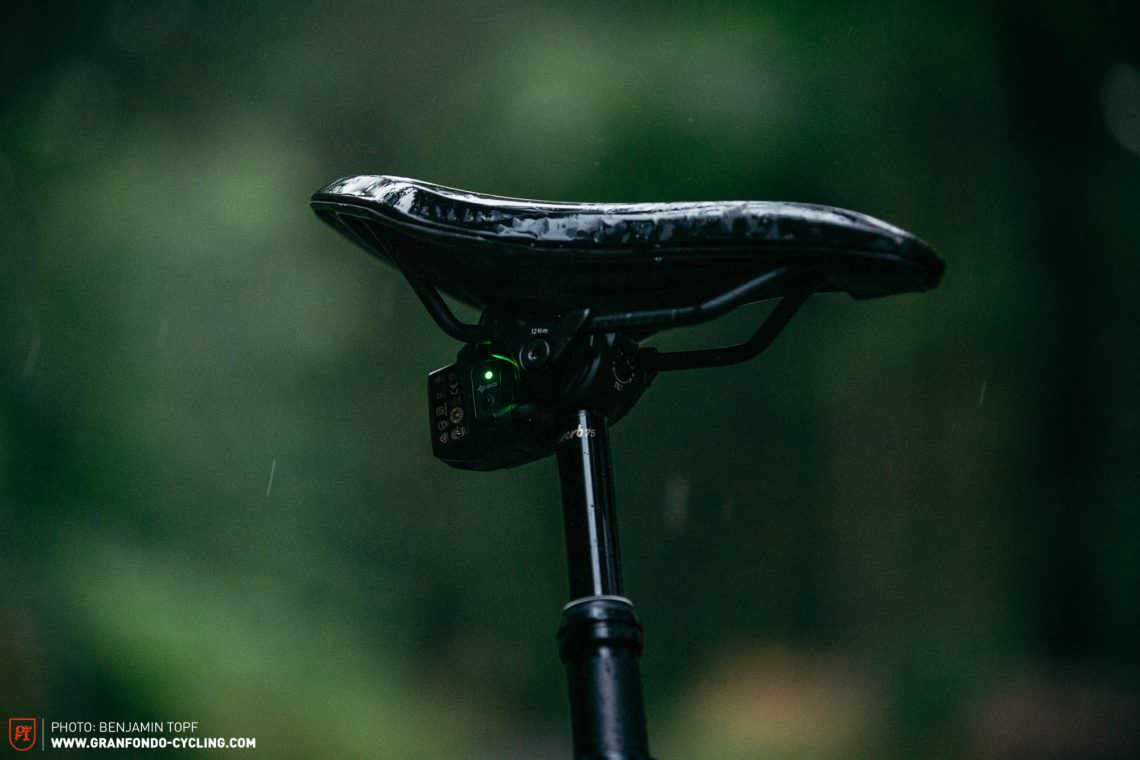
Air-only internals have pushed the oil cylinder out of a job, and this dropper post is built with ActiveRide compliance that’s completely rock solid when fully extended. Based on tube length, there’s 50 or 75 mm travel. All we had to do was two gentle pushes on the shifters to activate it with the added bonus of extra compliance when in between the fully dropped and fully extended positions thanks to the Air Only ActiveRide, which SRAM have neatly dubbed ‘travel for your saddle.’ The seatpost is weight adjustable – as a rule: your weight in pounds x 2 = pressure in psi to put into the air chamber. If you’ve got a standard shock pump, it probably needs to reach the end of the scale – heavier riders should get a pump up to psi in this case. The Reverb AXS XPLR dropper post is designed for riders weighing up to 125 kg.
Quick Facts
- Diametre: 27.2 mm
- Drop: 50 mm or 75 mm depending on length
- Seatpost length: 350 mm or 400 mm
- Setback: 0 mm
- Seat clamp options: 7 mm round rails, 7×9 mm oval rails and 7×10 mm oval
- Waterproof and dustproof to IP69K
- Compatible with all AXS bar controllers (drop or flat bars) –
- Weight: 593 g in the 400 mm version with 75 mm drop
- Price: € 600 (incl. battery and charger, no controller)


First test: Reverb AXS XPLR dropper post
Much like the MTB version, it’s based on, the Reverb AXS XPLR dropper post is super intuitive and easy to use. Your hands can stay in position on the bars – this dropper works as standard through a double press of the gear shifters (although you can customize this through the AXS app). We were taken away by its rapid reaction time. This new dropper relies on current AXS batteries, which takes away a cost and concern. To adjust the saddle angle, there’s a screw at the head of the seat clamp for finite adjustment. What else we liked: mass compatibility with all the usual saddle rails!

The brand promise that the seatpost will be completely rigid when fully out or fully in and it lived up to this without any millimetre of play. To use the ActiveRide damping, just drop the saddle a touch – just a hair’s width will do – and you’ll be swept along on a glorious flying carpet. Provided you’ve set up the pressure correctly, the dropper will do a stellar job of taking the edge off hits, but don’t expect full disengagement. Unlike carbon seatposts with built-in compliance, we didn’t feel any lateral flex – a bonus when you’re pushing hard on the pedals. The ‘travel’ in the seatpost probably amounted to around a centimetre during our testing. There’s some learning needed when it comes to how much you want to drop the post and for how long – think about the change in your saddle height that it accounts to, and you’ll realise that you won’t want to have it dropped for too long. Key here is looking ahead and being aware of exactly what terrain warrants what. Because it takes your weight to activate it, if you drop it when the trail is already mega-bumpy, it’ll naturally be harder to have finite control of how far it goes drop.

With 75 mm drop on our test Reverb, we got the saddle comfortably out of the way for steep, technical descents. Some may not see a reason for this, but once you’ve ridden it you’ll see how much more freedom you get on the bike to move, which instils more confidence. If you’re using standard saddle bags, it’ll be close to impossible to use based on its design. However, specific dropper post models for bike packers do exist – they’re just limited in their travel. With a max drop of 75 mm, it does raise the question of necessity.
Our thoughts on the RockShox Reverb AXS XPLR
The Reverb AXS XPLR dropper post is a sensible and long overdue next step in the Reverb line-up. Forced to include a sort of air cushion in its design, the engineers have made a virtue out of necessity and turned it into a genuine comfort enhancer. Thanks to its compatibility with current AXS components and standard dimensions, it’s easy to see this as a seriously decent upgrade for those who want to send it on their gravel bike.

New gravel gearing: XPLR eTap AXS rear derailleurs and cassettes
The new 1x specific XPLR drivetrain from SRAM is designed for modern gravellers and falls into a mid-range gear ratio with a cassette of 10-44t. A nice compromise between a big range and small steps, it looks well suited to undulating terrain, where you’re gorging on a mix of road and trail. There’s a choice between three price categories: RED, FORCE and Rival, with all using SRAM’s own AXS connectivity, chain management and hydraulic disc brakes.
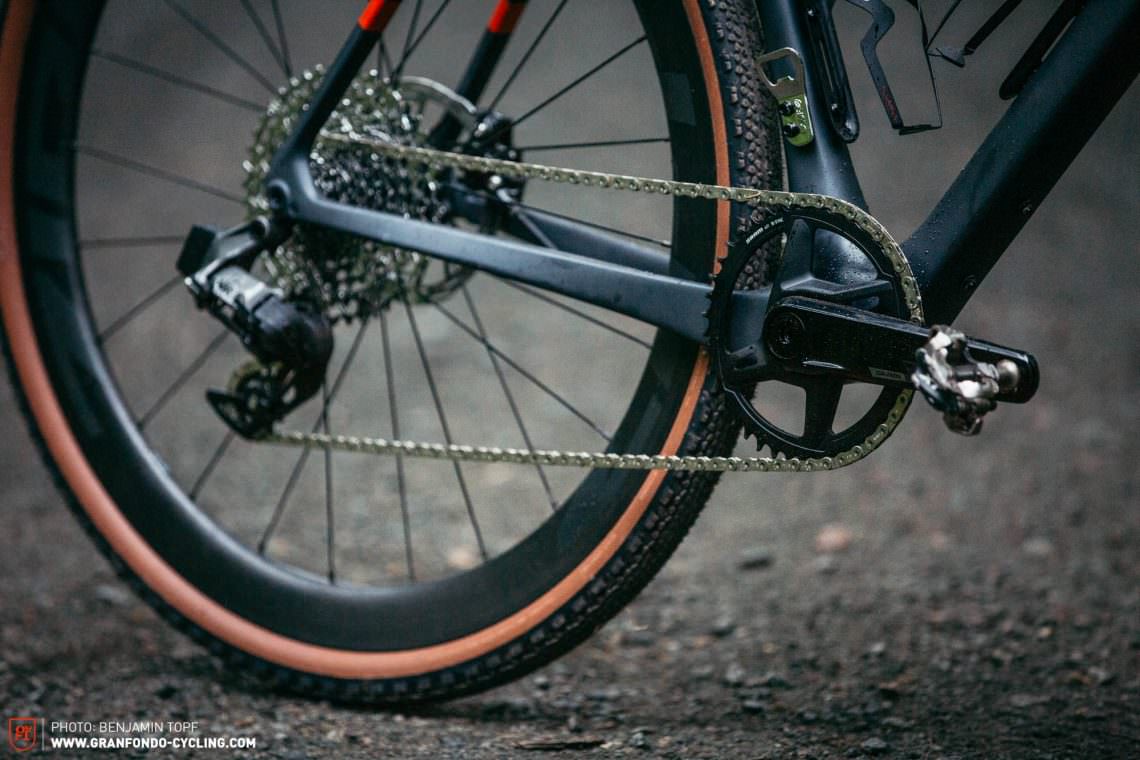
The new drivetrain parts largely hail from SRAM’s road segment but the chainring, derailleur and cassette are XPLR specific. Long-term users of SRAM 1x drivetrains will remember their all-round cassette with 11-42t. Previously SRAM haven’t really catered for these types of ratios, as it would have taken a whole new derailleur because of the different pull ratios. Sure, in theory, they could have downgraded an Eagle AXS by using a smaller cassette, but that struck the engineers as the lazy option.

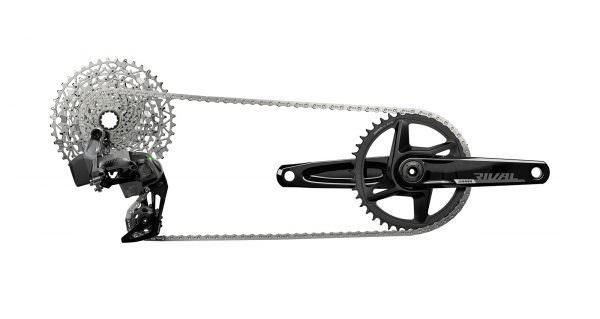

XPLR eTap AXS derailleur: RED, Force und Rival
All XPLR eTap AXS derailleurs are designed for 1x set-ups and can be used with the brand new 10-44t or the current 10-36t cassette. The shifting, usage and customization are the same as current eTap AXS derailleurs. The servomotors and parallelogram (how the derailleur moves) are identical to the road version, while the B-knuckle (upper area on your derailleur), cage and X-SYNC jockey wheels have been redesigned. For RED and Force, the proven Orbit Fluid clutch is used to minimize chain slap on bumpy ground. Rival sticks with a foam clutch. All derailleurs are compatible with AXS controllers, eTap AXS batteries and the AXS app.

of driving time or 1,000+ kilometers (more than 620 miles) or about 60 hours of driving.
Specification
- Gearing: 12-speed
- Cage length: medium
- Max. capacity: 44
- Colour: RED black, Force grey, Rival black
- Pulley bearings: RED ceramic, Force steel, Rival steel
- Cage material: Aluminium
- Weight (without battery): RED 293 g, Force 308 g, Rival 327 g
- Price: RED €685, Force €465, Rival €265



SRAM XPLR 10–44 T cassette
The 440 % gear range on the brand new XPLR 10–44 T cassette has got you covered for steep climbs and high-speed burn-offs on the asphalt. It is only 1x compatible and available in XG-1271 (Force) and XG-1251 (Rival) level. There’s no RED-standard cassette just yet due to the complexity of its production and the demand for producing its current models. The cassettes are compatible with current flat top chains and XDR free hub bodies.

Specification
- Gears: 12x
- Gearing: 10–44 T
- Sprocket finish: Nickel chrome
- Steps: 10, 11, 13, 15, 17, 19, 21, 24, 28, 32, 38, 44
- Weight: XG-1271 (Force) 373 g, XG‑1251 (Rival) 412 g
- Price: XG-1271 (Force) €225, XG‑1251 (Rival) €160



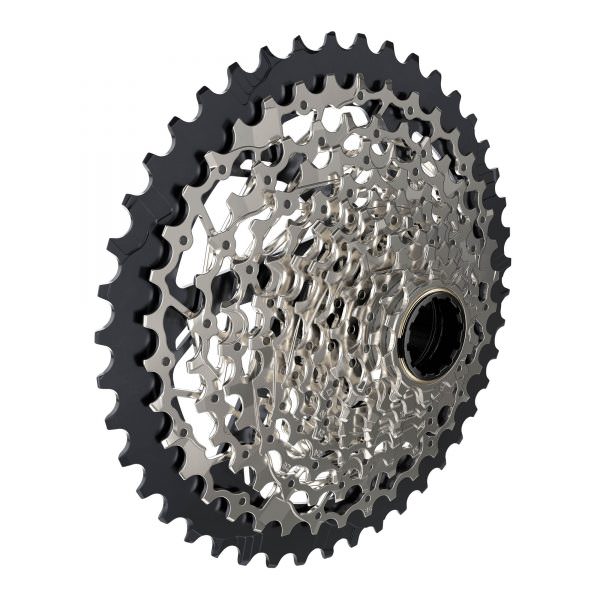
New direct mount 1x cranksets

While the crank arms for RED and Force stay the same, the direct mount 1x chainrings for 38-46t have put fresh wind into the XPLR drivetrain set-up. SRAM’s well-known X-SYNC chainring technology with varying sized teeth is used here, which results in good chain control. The high quality, lazer-etched direct mount chainring is used on both the RED and FORCE as they both have the same mounting system. These also function with a SRAM power meter, if that’s your thing. Rival crank users get a slimmed-down option. All models have DUB bottom brackets and spindles.
The Force 1 Wide crankset is built with a longer crank spindle and fits road models and 73 MM axle standards. This means it’s compatible with 135 mm, 142 mm and Boost rear axle spacing.

Specifications
- Gears: 1×12
- Cog sizes: 38 T, 40 T, 42 T, 44 T, 46 T
- Crank lengths: 165 mm, 167.5 mm, 170 mm, 172.5 mm, 175 mm, 177.5 mm
- Chainline: 45.0 mm or 47.5 mm
- Bottom bracket: DUB
- BCD: RED and Force 107 BCD and Direct Mount // Force 1 Wide and Rival 1 Wide Direct Mount
- Price: RED €700, Force €435
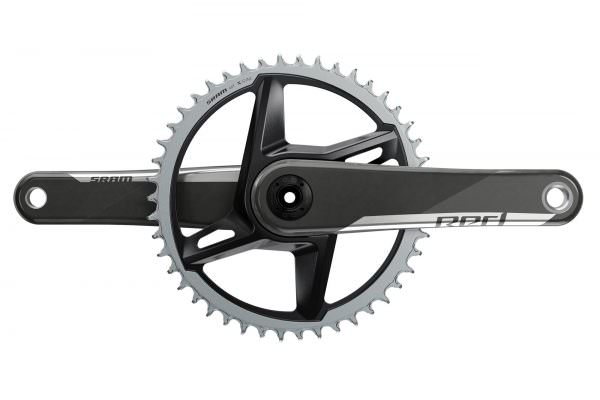
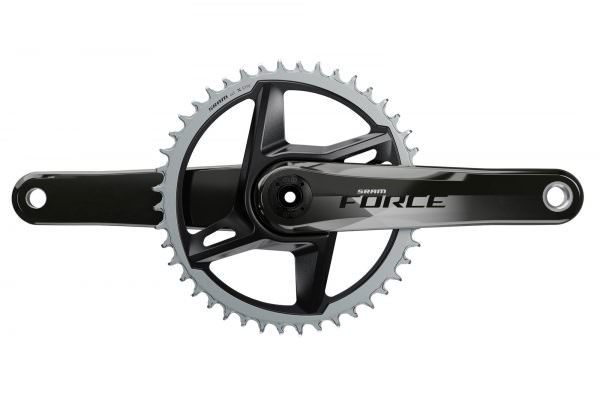
Our thoughts on the new SRAM XPLR eTap AXS ratio
With the new XPLR gear ratio, SRAM have sealed a gap in their 12-speed portfolio. They’ve sensibly deployed in-line products in all the right places and the compatibility with the rest of the eTap AXS universe is a big plus for SRAM fans and current customers. We didn’t spot any weaknesses while testing and we will keep you updated as it goes on long-term test.
Zipp 101 XPLR wheelset
The 101 XPLR represent Zipp’s first attempt at designing wheels with the (extreme) gravel rider in mind. Relying on the brand’s MOTO technology, these hoops intend to deliver more control and durability over rough terrain, leading to a smoother ride. The concept is based on Zipp’s 3ZERO MOTOR wheels, which our ENDURO team have already tested out for our sister magazine – the verdict: Zipp are onto something. The rims measure 27 mm, and the wheelset comes in 700C or as a 650B option.

The MOTO technology is based on a single wall rim construction, which means that the rims flex efficiently under pressure. This doesn’t just equal better compliance and improved dampening, it also means more grip. Our MTB team of editors can attest to this concept already! Us, meanwhile, we’re stoked over the first truly gravel-specific wheelset and will be back soon with a full test review.


Alongside the new wheelset (€1,870), Zipp are also launching the Zipp G40 XPLR tyres (€72) and the Zipp Service Course SL-70 XPLR bars (€123). Check out the table for their specs. .
| Zipp 101 XPLR | |
|---|---|
| SIZE | 650b, 700c |
| RIM CONSTRUCTION | Carbon – Hookless |
| TIRE COMPATIBILITY | Tubeless tires only |
| BRAKE COMPATIBILITY | Disc (Center Lock) |
| RIM – INSIDE WIDTH | 27mm |
| RIM PROFILE | Asymmetrical |
| RIM FINISH | NCF, adhesive decals |
| NIPPLE MATERIAL | Aluminum |
| SPOKE TYPE | CX-Sprint |
| SPOKE COUNT | 28 |
| SPOKE PATTERN | 3 Cross |
| DRIVER BODY TYPE | SRAM XDR, SRAM/Shimano Road |
| AXLE TYPE | TA 12×100, TA 12×142 |
| BEARINGS | Cartridge – Steel |
| DRIVER MECHANISM | 6 Pawls Leaf Spring, 66 POE |
| WEIGHT | 700c: 1,665 g, 650b: 1590 g |


| Zipp G40 XPLR Tires | |
|---|---|
| TIRE TYPE | Tubeless Ready |
| TIRE SIZE | 700×40 |
| WEIGHT | 480 g |

| Zipp Service Course SL-70 XPLR Handlebar | |
|---|---|
| MATERIAL | AL-7050 |
| REACH | 70mm |
| DROP | 115mm |
| WIDTH (CENTER-TO-CENTER) | 40cm, 42cm, 44cm, 46cm |
| CLIP COMPATIBLE | Yes |
| CLAMP DIAMETER | 31.8mm |
| RAMP ANGLE | 10° |
| OUTSWEEP | 11° |
| BACKSWEEP | 3° |
| DROP SHAPE | Variable |
| CLAMP WIDTH | 100mm |
| FINISH | Matte with stealth decals |
| DROP FLARE | 5° |
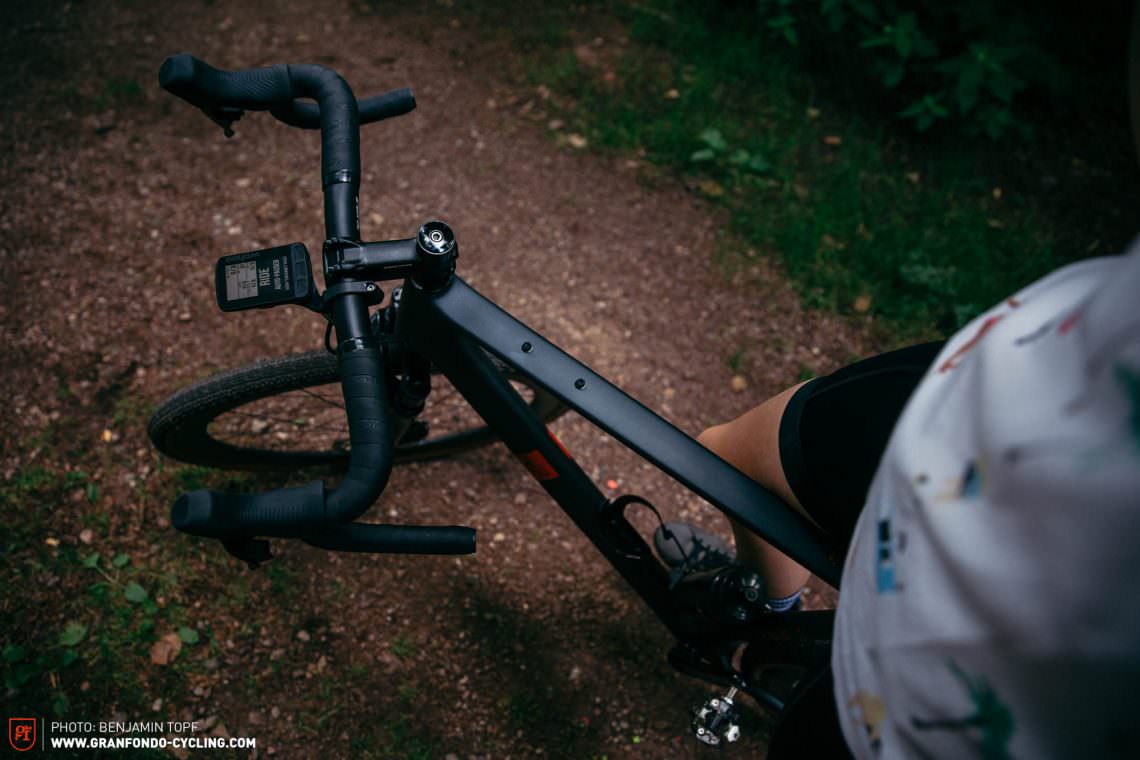


Availability of SRAM XPLR components
SRAM XPLR AXS components are available in limited numbers from August 2021, with a bigger drop coming in September 2021. The SRAM XPLR XG-1251 cassette and complete bikes built with this cassette will not be available until October 2021. Availability can vary from country to country. Find out more details through your nearest dealer.
The Zipp 101 XPLR wheels and the RockShox Rudy Ultimate XPLR fork will be available from August 2021 in limited numbers. From September 2021, they will be more widely available. The RockShox Reverb AXS XPLR dropper post will land on the market in limited quantities from September 2021. Global availability is expected to roll-out over the coming months, but it’s not exactly clear where and when we can expect to see the products in stores. In short: you won’t be able to buy all the components straightaway.

Our thoughts on SRAM XPLR collection
It feels like SRAM’s XPLR collection could not have come at a better time and it represents a whole line of exciting products. For existing and new customers, the AXS universe just got better with new options for setting up your drivetrain. The Zipp 101 XPLR wheels have the potential to be serious game changers in the gravel world. Right now, we’re wondering what the accumulative potential of the entire collection is going to be. A one-shop solution or a dip-in-dip-out of tuning components? Over the coming months, we’ll continue to test the items and it’ll be interesting to see how our opinion develops… Stay tuned.
For more information on the SRAM XPLR Collection head over to sram.com

Did you enjoy this article? If so, we would be stoked if you decide to support us with a monthly contribution. By becoming a supporter of GRAN FONDO, you will help secure a sustainable future for high-quality cycling journalism. Click here to learn more.
Words & Photos: Benjamin Topf







